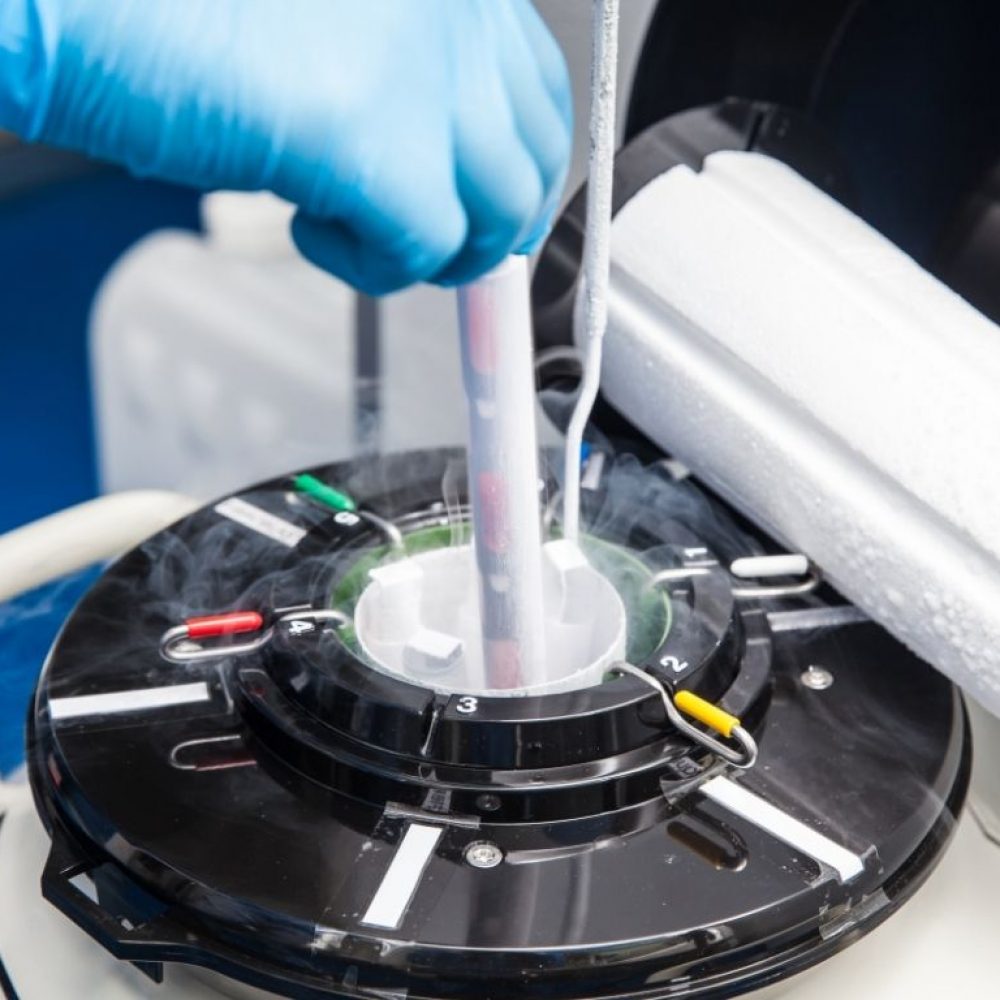Frozen embryo transfer (FET)
The thawing and use of frozen embryos is called FET (frozen embryo transfer) procedure. Frozen embryos can be transplanted into the uterus at an appropriate stage of a woman’s natural or hormone-supported menstrual cycle.
Frozen embryos are stored in liquid nitrogen in stable conditions.
Over 90% of embryos survive the thawing process. According to Estonian law, embryos may be stored for up to seven years.


